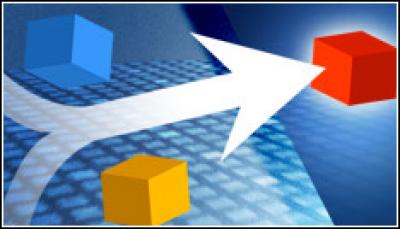Rackable CEO Explains SGI purchase

It’s a tiny deal compared to the proposed IBM-Sun Merger, but Rackable will do well with SGI, says Mark Barrenechea
Twice-bankrupt SGI may be well past its best, but it is a good acquisition for its new owner, Rackable Systems, says Mark Barrenechea, president and CEO of Rackable.
Rackable announced 1 April that it is buying SGI — formerly known as Silicon Graphics — for $25 million (£17 million), a pittance for a company that itself once sold massive computing systems for millions of dollars.
However, after years of being unable to adapt quickly enough to the changing technology landscape, SGI is now shutting down for good, with its products and employees being folded into Rackable, which makes industry-standard servers and storage systems for midsized and enterprise compute environments.
The sale of SGI is the latest move in a market that seems ready for some consolidation. Most notably have been the rumours that IBM is negotiating to buy Sun Microsystems, another tech stalwart that has been struggling for several years. Neither IBM nor Sun have confirmed the talks.
With SGI on board, Rackable will be a larger player in the HPC (high-performance computing) business, will be able innovate even more in such areas as power, cooling and visualization, and will be a player in the growing field of shared storage, said Barrenechea, in a brief conference call with investors, analysts and reporters.
“This is a strategic fit with limited product and marketing overlap,” he said. “Relevant innovation is at the heart of this proposed deal.” There is some overlap with SGI’s low-end systems in the cluster computing space, but not much beyond that, he said.
The HPC market will grow to $11 billion in 2012, according to researcher IDC, and Rackable should now be a stronger player in that space, he said. SGI a year ago bought Linux Networks, in large part to help it grow its HPC business.
Combined, the two companies spent $70 million in research and development, showing a tradition of innovation that he expects to continue. Barrenechea said 2009 will be “a year of integration and innovation.”
Rackable’s systems use a back-to-back design which helps increase the density of data centres, reduce power consumption and improve cooling and management.
Some may see the deal as the fall of a technology titan, but in reality, SGI had simply run its course, said Clay Ryder, an analyst with The Sageza Group: “SGI really didn’t have the strength to continue as an independent entity, and the industry said so.”
The deal with Rackable is a good one for SGI customers, who can expect to see some level of support for their systems, as well as resellers, who will still have some SGI products to offer, he said. “What really matters to customers is that their products are supported, and for them, it really doesn’t matter what nameplate is in there,” Ryder said.